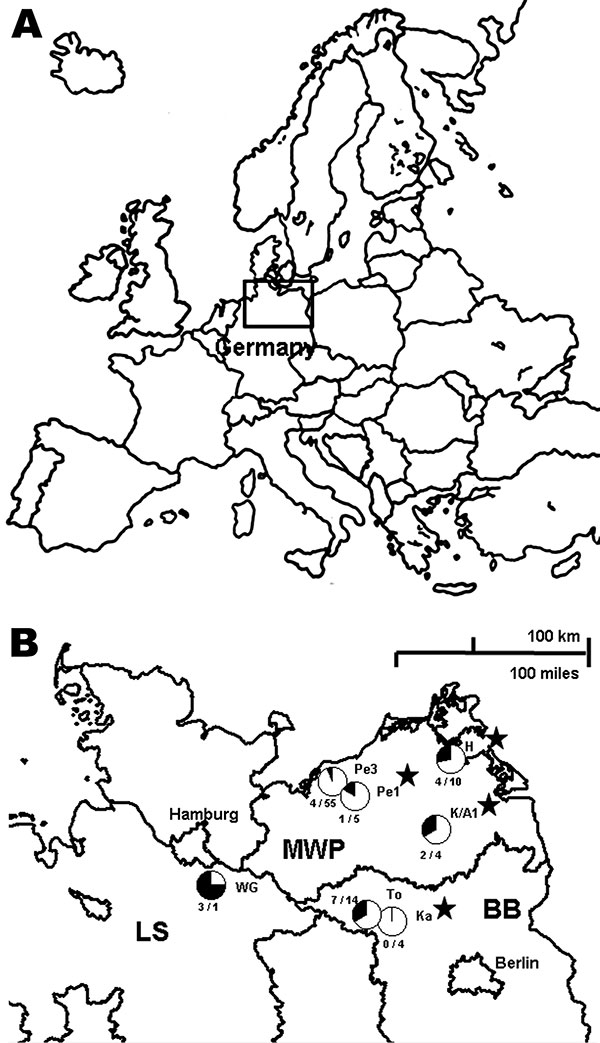Volume 15, Number 12—December 2009
Dispatch
Dobrava-Belgrade Virus Spillover Infections, Germany
Figure 1

Figure 1. Seroprevalence of Dobrava-Belgrade virus (DOBV) in Apodemus agrarius mice within 3 federal states of Germany, central Europe. A) Location of the study area (box). B) Locations of the study sites. WG, Lüneburg district, Lower Saxony (LS); Pe1 and Pe3, Güstrow district; H, Nordvorpommern district, K/A1, Demmin district, all Mecklenburg-Western Pomerania (MWP); To and Ka, Ostprignitz-Ruppin district, Brandenburg (BB). For each trapping site, the rate of seroreactive A. agrarius mice is given as a circle (seroreactive and equivocal samples in black, negative samples in white) and with the numbers of seroreactive and equivocal samples/negative samples. At sites Pe1, H, K/A1, and Ka, 1 seroreactive A. flavicollis mouse was detected in each location (marked with stars). At site Pe1, 1 equivocal sample was found by the DOBV immunoglobulin (Ig) G ELISA. In addition to Apodemus mice, 138 rodents of other species, including 116 bank voles (Myodes glareolus), were trapped during the same period at sites Pe1, Pe3, K/A1, Ka, and To, but none of the 136 rodents with available transudates reacted in the DOBV IgG ELISA. Transudates with an optical density (OD) value below the lower cutoff (average of the OD values determined for 2 parallel tests of a negative Apodemus spp. serum control; average 0.041) were regarded as negative. Samples with an OD value above the upper cutoff (2-fold of the lower cutoff; average 0.082) were regarded as positive. Samples showing OD values between the lower and upper cutoffs were regarded as equivocal.